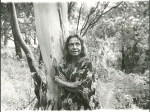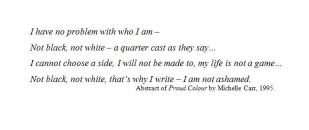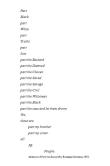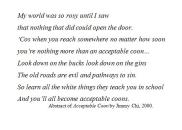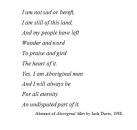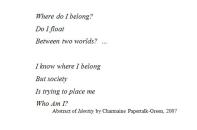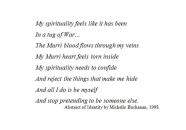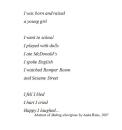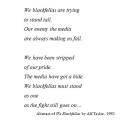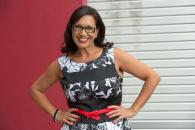AustLit
-
The following trail is linked to the The BlackWords Essays by Dr Anita Heiss, published by AustLit in 2015. They bring together the works, authors and organisations that are mentioned in the essays and support the teaching and incorporation of Aboriginal and Torres Strait Islander texts in teaching and general reading.
-
'In the 1960s Oodgeroo Noonuccal (then Kath Walker) hit the literary limelight as Australia’s first published ‘Aboriginal poet’ and since then Aboriginal writers have used their work as a form of self-definition and to defend our rights to our identity. Many authors are inspired by the need to redress historical government definitions of Aboriginality, to reclaim pride in First Nation status, to explain the diversity of Aboriginal experience, and to demonstrate the realities and complexities of ‘being Aboriginal’ in the 21st century.' (Heiss, Anita, BlackWords: Writers on Identity, 2015)
-
'The concept of Aboriginality has proved difficult at times for Australians to grasp, and sometimes even for Aboriginal people themselves, especially those who were denied access to family, culture and community by past government policies of enforced separation. The effects of the differing experiences of Aboriginality are, nevertheless, evident in writings by Aboriginal people, across all creative genres. Aboriginal authored poetry, short stories, plays, songs, autobiographies, biographies, community histories and even children’s books have tackled head-on the issues related to ‘being Aboriginal’. In this way writing is used as a tool to educate non-Indigenous readers in understanding Aboriginal Australia better, which in turns aids race relations between Black and white Australians. Many authors are also ‘writing Aboriginality’ as a means of catharsis.' (Heiss, Anita, BlackWords: Writers on Identity, 2015)
-
'Over 150 autobiographies, biographies, life stories and memoirs have been written specifically (or co-incidentally) in ways that help readers understand the historical definitions and current day realities of ‘being Aboriginal’. In my memoir Am I Black Enough for You? (Random House, 2012), for example, I wrote of my personal story and life experiences here and abroad, to demonstrate how identity impacts on and plays out through everyday activity and life – whether I am in a classroom teaching, writing a novel about Aboriginal women, or just hanging out with my friends and family.' (Heiss, Anita, BlackWords: Writers on Identity, 2015)
-
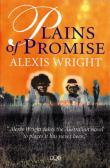 Image courtesy of UQPSee full AustLit entry
Image courtesy of UQPSee full AustLit entry'In this brilliant debut novel, Alexis Wright evokes city and outback, deepening our understanding of human ambition and failure, and making the timeless heart and soul of this country pulsate on the page. Black and white cultures collide in a thousand ways as Aboriginal spirituality clashes with the complex brutality of colonisation at St Dominic's mission. With her political awareness raised by work with the city-based Aboriginal Coalition, Mary visits the old mission in the northern Gulf country, place of her mother's and grandmother's suffering.
(...more) -
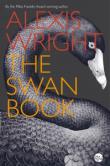 Courtesy of Giramondo PublishingSee full AustLit entry
Courtesy of Giramondo PublishingSee full AustLit entry'The new novel by Alexis Wright, whose previous novel Carpentaria won the Miles Franklin Award and four other major prizes including the Australian Book Industry Awards Literary Fiction Book of the Year Award. The Swan Book is set in the future, with Aboriginals still living under the Intervention in the north, in an environment fundamentally altered by climate change.
(...more) -
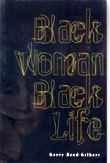 This image has been sourced from online.See full AustLit entry
This image has been sourced from online.See full AustLit entry'Kerry Reed-Gilbert's work reflects the struggles and victories of the human condition from the perspective of a black woman growning up in Australia. Kerry's poetry is poignant, honest and reflects her truth with dignity. She challenges each one of us to reflect on our own humanity and or commitment to our own highest truth.' (Back cover)
(...more) -
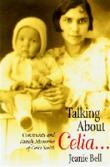 Image courtesy of UQP'Talking About Celia...is a montage of memories and pictures taking the reader inside an Aboriginal community and inside the life of an extraordinary Murri woman. People like Celia Smith are remembered through the stories told and re-told by their family and community...Celia left her mark on south-east Queensland communities and there are also many others around Australia who will remember her.' Source : Talking About Celia : Community and Family Memories of Celia Smith (1997). (...more)See full AustLit entry
Image courtesy of UQP'Talking About Celia...is a montage of memories and pictures taking the reader inside an Aboriginal community and inside the life of an extraordinary Murri woman. People like Celia Smith are remembered through the stories told and re-told by their family and community...Celia left her mark on south-east Queensland communities and there are also many others around Australia who will remember her.' Source : Talking About Celia : Community and Family Memories of Celia Smith (1997). (...more)See full AustLit entry -
See full AustLit entry
'This could be an extract from a story. It is an extract from my life story. The conversation happened pretty well just like that - although I fixed it up to make it sound better. Oh , groan! Not only do I think that being "one of those" makes me right but that I can act like some out-of-control deity and rearrange facts to make them read better. But then again, I am a writer and we writers do that. We imagine, we create, rearrange and then we write it all down.' (Source: Abstract, Hodgson, 2002)
(...more) -
'With over 900 poetic works by Aboriginal writers on the subject of ‘identity’ (as indexed in BlackWords), it is clear that community discourse around self-representation and definition is important. The poems, as demonstrated below, often challenge outsider concepts and prescriptions of Aboriginality, while offering alternative ways of considering diverse experiences and explanations of identity. ' (Heiss, Anita, BlackWords: Writers on Identity, 2015)
-
-
-
-
-
-
-
-
-
-
-
'There are over 60 Aboriginal authored children’s works considering the subject of identity listed in BlackWords. Each work provides a unique way to simplify a sometimes complex issue for young readers and often aims to instil pride in identity in Aboriginal readers.' (Heiss, Anita, BlackWords: Writers on Identity, 2015)
-
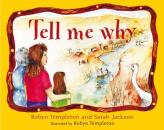 Cover image courtesy of the publisher.'A true story about a young girl's search for identity and desire to understand her Aboriginality. Seven-year-old Sarah goes back to her great-grandmother and asks questions about her family. This feel-good story looks at how family history shapes our childhood journeys.' Source: Publisher's blurb. (...more)See full AustLit entry
Cover image courtesy of the publisher.'A true story about a young girl's search for identity and desire to understand her Aboriginality. Seven-year-old Sarah goes back to her great-grandmother and asks questions about her family. This feel-good story looks at how family history shapes our childhood journeys.' Source: Publisher's blurb. (...more)See full AustLit entry -
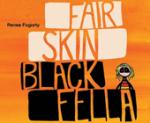 Courtesy of Magabala Books'This is the story of Mary, a young Aboriginal girl who lives on a red and dusty cattle station. Shunned by the other girls because of her fair skin, Old Ned, one of the community Elders, finally speaks up. With words of wisdom, he teaches the girls that Aboriginal identity transcends skin colour and that family, community, country, culture and spirituality is what being Aboriginal is really about.' Source: www.magabala.com (...more)See full AustLit entry
Courtesy of Magabala Books'This is the story of Mary, a young Aboriginal girl who lives on a red and dusty cattle station. Shunned by the other girls because of her fair skin, Old Ned, one of the community Elders, finally speaks up. With words of wisdom, he teaches the girls that Aboriginal identity transcends skin colour and that family, community, country, culture and spirituality is what being Aboriginal is really about.' Source: www.magabala.com (...more)See full AustLit entry -
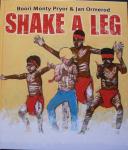 Scanned by AustLit.'From pizza shop to bora ground, here is a joyous celebration of food, dance and cultural understanding. When three young boys go to a pizza parlour and meet an Aboriginal chef who can speak Italian and make a deadly pizza, they're in for a surprise!' Source: www.allenandunwin.com/ (Sighted 26/05/2011). (...more)See full AustLit entry
Scanned by AustLit.'From pizza shop to bora ground, here is a joyous celebration of food, dance and cultural understanding. When three young boys go to a pizza parlour and meet an Aboriginal chef who can speak Italian and make a deadly pizza, they're in for a surprise!' Source: www.allenandunwin.com/ (Sighted 26/05/2011). (...more)See full AustLit entry -
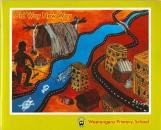 This image has been sourced from online.See full AustLit entry
This image has been sourced from online.See full AustLit entry'Old Way New Way looks at traditional art and culture alongside modern day mediums and ways of doing things. For example the kids use clapsticks old way and play musical instruments like the sax, new way. They like rock art old way and digital art new way.' (Source: Anita Heiss, Blog Spot, posted 2 Oct, 2011)
(...more) -
'Last week a young Indigenous man told me about his struggle to maintain his sense of identity surrounded by the distractions and allure of his life in the big city...' (...more)See full AustLit entry
-
Struggling to Find Their Place : Indigenous Youth, Identity, and Storytelling in Beneath Clouds and Samson & Delilah by Samantha Fordham
See full AustLit entryThe reconciliation period in Australia in the 1990s gave rise to a number of feature films that explicitly engage with the themes of reconciliation, and in particular with issues surrounding understandings of history and Indigenous identity. The two feature films on which this article focuses, Beneath Clouds (Sen 2002) and Samson & Delilah (Thornton 2009), each centre on a pair of young Indigenous characters struggling to find their place in a world characterised by disadvantage and disconnection from mainstream society.
(...more)
You might be interested in...

